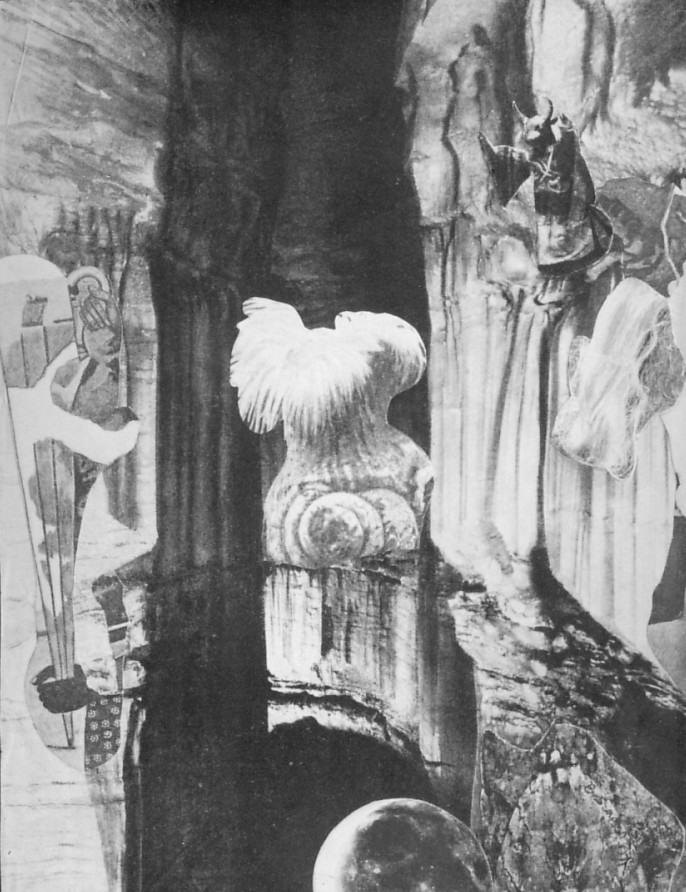|
Cave of the Mandarins
.

Adroit cartographers
over the centuries have learned to communicate by inserting discrete
visual
clues or codes into their maps. An expert in the discipline can pick
them out
and, from time to time, discussion about them has entered into
scholarly
discourse, even if the practice is more playful than serious. Scholars
must
laugh like the rest of us.
That they do so amidst
arcane analyses for a small audience comes as just another
flourish in an otherwise routine culture that
the academy prizes.
Recently, linguists
from the University of Modena, Italy, have applied new translation
techniques
to this exclusive tradition. Coupling algorithms refined to detect
subtext and
structure in comparative groups of visual signs with newly conceived
oneiric
interpretations, they have produced a quixotic yet compelling narrative
that
has unearthed some disturbing values.
Maps portray
landscapes, natural and urban. They also portray something of the
dreamlife
that unconsciously goes on when awake, and which, however much
cartographers
guard against it, seeps into their work. This does not mean that their
maps are
incorrect. They aren’t, given the historical period in which they drew
their
maps and the information they had to draw them. It does mean, however,
that
cartographers knew or felt or intuited, as they drew, that the line,
circle,
squiggle or vector spoke to them in a language that the clues or codes
they
left on the map referred to.
Here, though, is what
our linguist group has found.
Figured bodies of land
or water, outlined and inset with geographic features – such as plains,
lakes,
rivers, highlands, mountains, valleys, islands and the like – provoke
erotic
images; a tendency quite natural to us and which, I must admit, is a
predilection of my own. When viewed straight on or obliquely, images
emerge.
And however blurred or haphazard they might appear at first, a kind of
latent
visual subtext, more pronounced here, less pronounced there, they
slowly
clarify and then, as if part of the pulsation that keeps us alive,
disappear. A
slow natural flickering subsumes the map. Suggestive couplings, routine
seductive poses, wide glistening ecstatic eyes, moist curving lips,
full
breasts, an erect penis, a tangled vagina, the bare shoulder that
slopes to the
top of the arm, a hand with long reaching fingers, the slope of the
ankle, a
turned wrist, a sweaty cheek and other anatomical signs, many of which,
beyond
their status as cultural clichés, suddenly compel; transforming
the map into a
palimpsest of desire, both compassionate and cruel. Apparently, the
visual
clues or codes that cartographers inset into their maps attest to this
unique
facility, this envisioning, by drawing our attention to different areas
whose
boundaries interact. And what was once a recognizable geographic shape,
complete in itself, alters.
The terrestrial
cartography of surficial bodies becomes a medium that allows viewers to
see, as
it rises and as it passes, what attracts them most in this infectious
momentum.
The study group has also noted an eccentric disposition that figures,
not
humans, but animals in rut as well as large insects whose mating
choreographies
are as complex as they are savage, with death and ingestion a
concomitant
outcome; the female its dominatrix. Whether or not the translation of
other
animate creatures into visible images will occur, how they accord with
their
roles in nature, what sex leads and what sex follows, which is prey to
instinctual hunger, whether or not mimicry, masking and nurturance
claim their
pedigree are questions, surely among others yet defined, for further
study.
One result, however,
is fairly clear: The envisioning that researchers have developed leads
them and
us into realms, both imaginary and real, that refract individual
passions while
valorizing anew our capacities in mapping. At the same time, the
technique is a
risky one, especially when it prompts the viewer to enact what he or
she has
seen without the usual cautions in place, preferably in a palace built
for that
purpose or, if lacking, then on any stage suitable for what’s to come,
luxurious or plain, large or small.
Gregg
Simpson
and Allan Graubard
|
|
